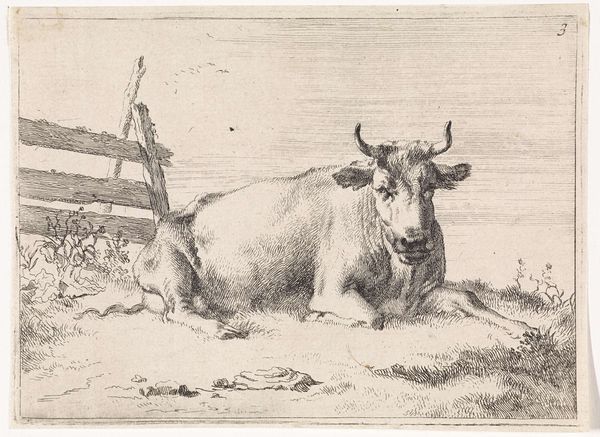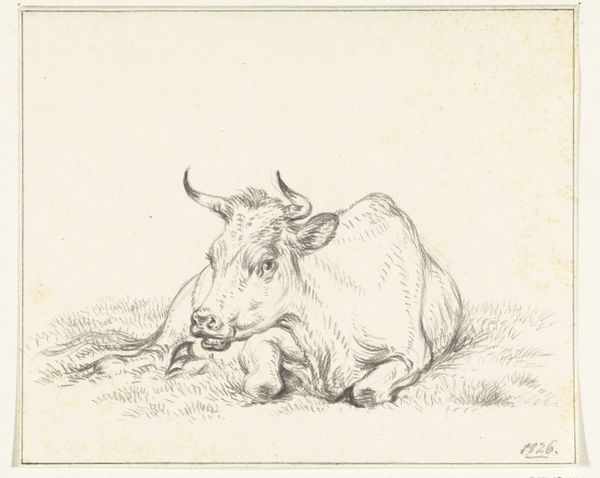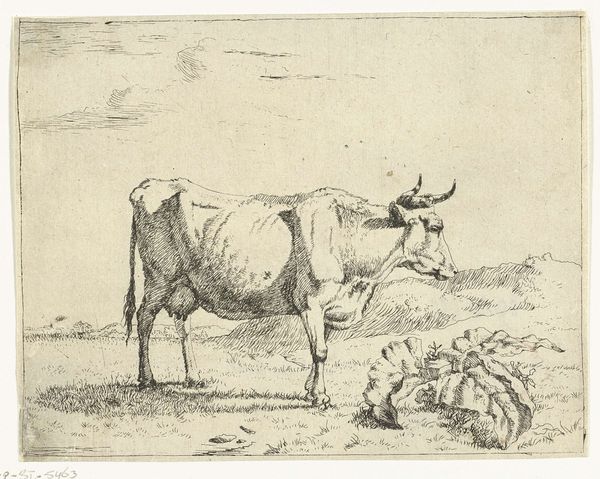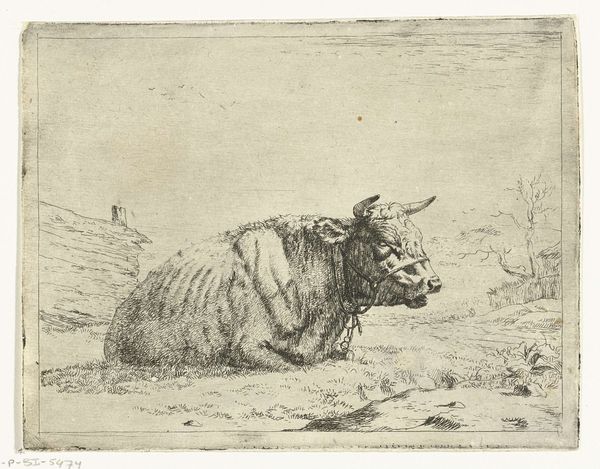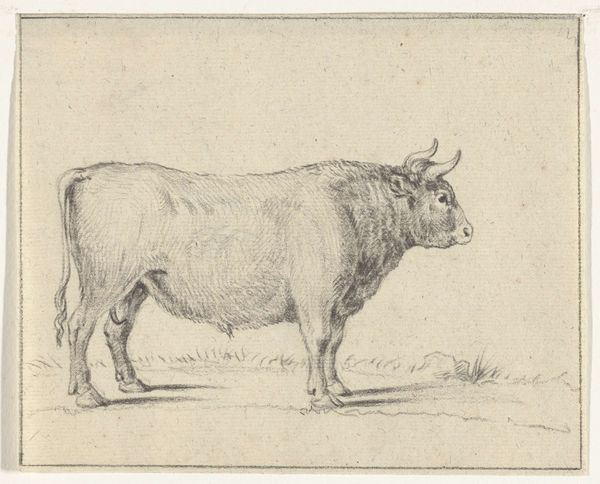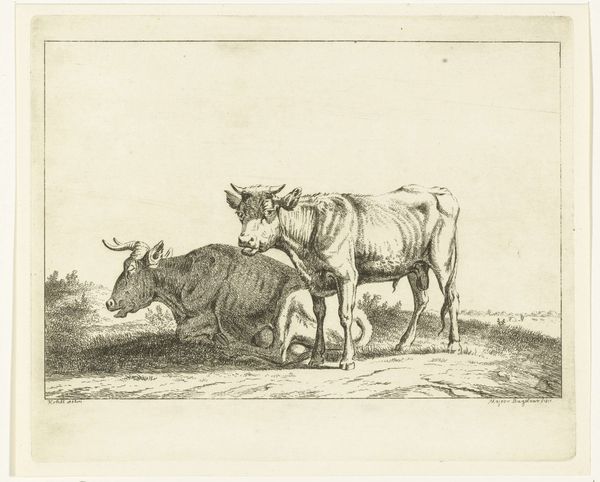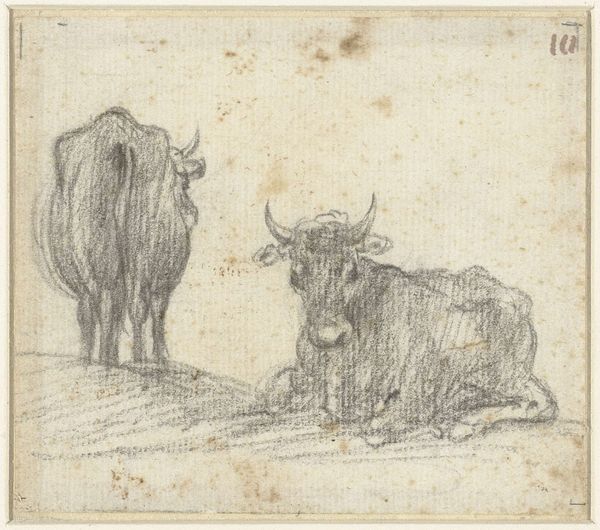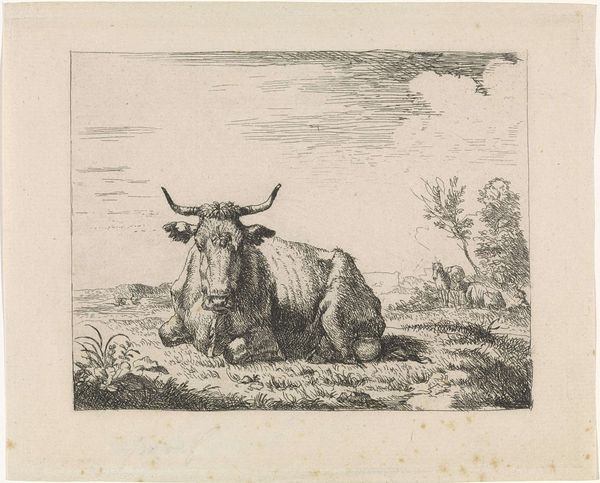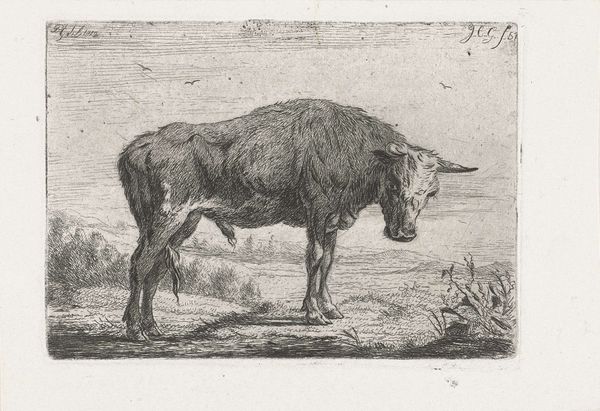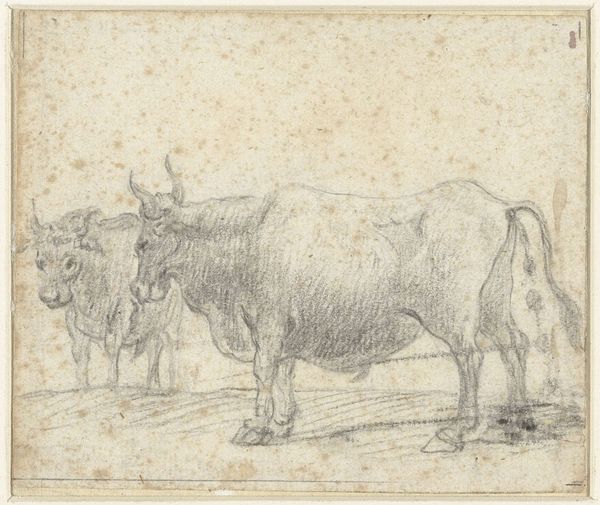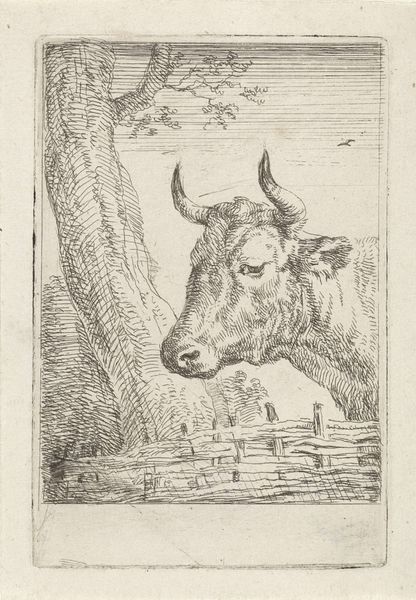
print, etching
#
dutch-golden-age
# print
#
pen illustration
#
etching
#
landscape
#
form
#
line
#
genre-painting
#
realism
Dimensions: height 79 mm, width 113 mm
Copyright: Rijks Museum: Open Domain
Marcus de Bye made this etching of a resting cow near a fence sometime in the 17th century. The etcher's craft is all about controlled corrosion. De Bye would have started with a copper plate, covering it with a waxy, acid-resistant ground. Using a sharp needle, he then scratched away lines of the composition, exposing the metal underneath. When the plate was dipped in acid, these lines would be bitten, creating grooves. The longer the plate was left in the acid, the deeper the lines would be. Ink was then applied to the plate, filling the etched lines, and the surface wiped clean. Pressed against paper, the ink transferred, creating the image we see. The fineness of the lines, and the gradations of tone, speak to de Bye’s skill and the labor involved. But let’s also consider the social context. The Dutch Golden Age saw an explosion of printmaking, as artists found a ready market for affordable images. The etching process, therefore, allowed artists to reproduce and distribute their work on a wider scale, responding to the growing demand for art among the rising merchant class. It allowed for more democratic access to images, challenging traditional boundaries between art and commerce.
Comments
No comments
Be the first to comment and join the conversation on the ultimate creative platform.
